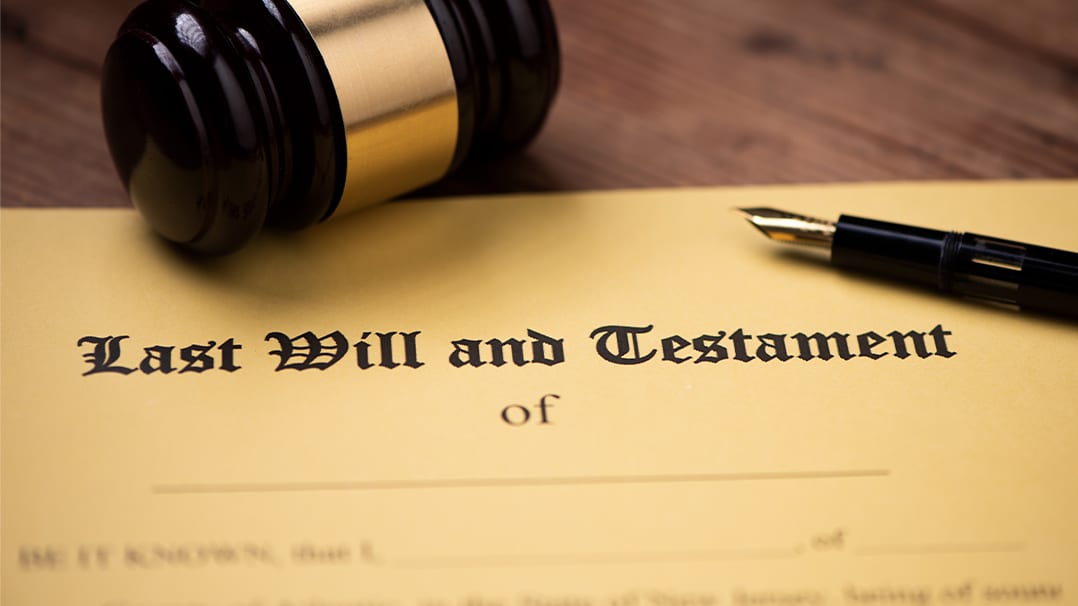
Triple Net Leases: What is a Triple Net Property in California?
June 3, 2023
The California Landlord’s Guide for Commercial Leasing
June 16, 2023
Disclaimer: I am not an attorney and this article is not intended as a substitute for advice from the appropriate legal, zoning, financial, construction and/or tax professionals. This information is provided for educational purposes only and is made without warranties or representations
Anyone who has amassed any significant assets throughout their life likely wants to know that those assets will be handled appropriately when they pass. There are a variety of ways this can happen, but one of the more proactive options is to create a living trust.
However, there are a handful of ways that a living trust can go wrong, and mistakes made along the way can invalidate it and leave you no better than when you started.
Let’s run down the common mistakes to explain why they cause issues and how to avoid them.
What Is a Living Trust, Anyway?
In case you’re not sure what a living trust is, need a refresher, or just want to know what we’re talking about, let’s explain what a living trust is and why you would want one first.
The simple version is that a living trust is a legal document that establishes an entity called a trust. This trust entity is then granted ownership and control over various assets (like safe deposit boxes, savings accounts, or real estate ownership).
The trust is managed by trustees, which are generally the original owners of the assets. So, you still control the assets and can continue using them for your own benefit, but in legal terms, they are owned and controlled by the trust, which is itself owned and controlled by you.

If you own a home or a parcel of commercial real estate, transferring ownership to a trust changes the name on the deed, but since you’re still the sole owner of the trust (or co-owner with a spouse), you still have all the same control and influence over the asset that you did before transferring ownership.
Note that it’s not always a good idea to transfer assets to a living trust. In particular, certain kinds of assets will consider being transferred to be a taxable event. For example, if you have a 401(k) and transfer that to a trust, the IRS will view that as a change in title and will tax the event just like an early withdrawal. Part of planning a living trust is determining which assets to transfer and which to maintain yourself, and a good estate planner can help with that.
Two Kinds of Living Trusts
There are two different kinds of living trusts: revocable and irrevocable.
- A revocable living trust is created by the grantor (the owner of the assets initially) and names the grantor as trustee. The grantor maintains control over the assets and the trust and can change the rules, beneficiaries, and terms of the trust at any time until they pass. They can even choose to terminate the trust.
- An irrevocable living trust is much more permanent. In particular, the beneficiary becomes the trustee immediately rather than on the passing of the grantor. The trust’s rules can’t be easily changed, or even changed at all in some cases outside of mandate from the courts. The trustee generally will manage the assets in the account according to the desires of the grantor and the terms of the trust.
Irrevocable trusts have a few benefits. In particular, since the transfer of ownership of the assets is total, it reduces taxes, protects those assets from creditors, and eliminates those assets from counting when means-tested government programs like Medicare are involved. Additionally, a trust allows your heir and assets to avoid probate, which can be time-consuming and expensive. Finally, living trusts are generally private legal documents, whereas something like a will is part of the public record.

While a revocable trust is often used as a temporary solution to grant a trusted individual control over assets while you’re ill, an irrevocable trust is a true, permanent solution. And, if you’re ill and end up passing because of it, a revocable trust will become irrevocable.
Now, let’s talk about the mistakes most commonly made when living trusts are involved.
Mistake #1: Not Funding the Trust
Many people conflate a will and a trust. With a will, you draft a set of directives that take effect when you pass, and you’re more or less done with it; as long as your intent, assets, or situation don’t significantly change between drafting the will and passing, you don’t really have to think about the will at all and can rest assured that it will take effect appropriately.
With a trust, though, drafting the legal document is only one step in the process. All too often, people will create a living trust and then fail to actually fund the trust.

Funding the trust is the legal term for transferring assets to it. If you want a living trust to hold and manage your real estate portfolio for you, for example, you need to actually do the legal process of transferring ownership of the properties from you to the trust. If you don’t, you still own the assets, and the trust is effectively empty. While you control the trust, the trust doesn’t control anything, so it effectively has no power.
Some kinds of assets need to be transferred immediately to have them count. These include things like real estate, a savings account, and ownership over safety deposit boxes. Other assets need to have the trust assigned as a beneficiary to pay to the trust after you pass. These include things like life insurance and retirement accounts.
If you don’t fund the trust, it doesn’t take effect, and your assets end up having to go through probate anyway.
Mistake #2: Not Designating a Successor Trustee
A living trust can be a great option to allow you to divest yourself of many assets and improve your immediate situation in terms of various benefits while still allowing you to control, receive, and benefit from the assets you divest. But, if you want those assets to be handled properly after your death, you need to designate a successor to take over the trust when you die.
If you don’t have a successor, the trust passes to no one and will need to go through probate anyway.

Moreover, you need to carefully consider who you make your designated successor. It can be tempting to, for example, designate your eldest child, but will they be in the proper mindset to appropriately care for your assets when you’re ill or have recently passed, or will they be more tempted to make poor decisions or fall victim to predatory vultures?
A best friend might be able to handle your desires, but if they’re around your age, they might not be in a position to handle the assets for more than a few years themselves. You need to pick an appropriate person to handle your trust if you want your assets to be properly handled after your death.
Mistake #3: Not Informing or Preparing Your Successor
When you draft a living trust, it’s entirely possible to choose a successor trustee but never actually tell them. You might have an unspoken assumption amongst the family of who will handle the assets, but the successor may not actually be aware of the legal backing or of the details necessary to manage those assets until it is sprung upon them at your passing.
While familiarity and preparation are benefits to informing your successor and giving them a copy of the trust agreement, there’s another benefit that can be significant as well: shortcutting some of the eventual hassles of handling your assets.

Specifically, it can be a good idea to bring your successor trustee to your various financial institutions and introduce them to whoever is your manager or representative at that institution. That way, they don’t need to jump through a bunch of hoops just to prove they’re your successor because they’ve already been introduced to and know the person you have at the institution managing your assets.
This doesn’t have to be a hugely formalized process. Simply bringing them with you on a few meetings with your contact can be enough.
Mistake #4: Not Properly Drafting the Trust Document
A trust is a complex legal document, and that means it is subject to hundreds of specific laws, regulations, and governance at pretty much every level of authority. As such, it needs to contain specific legal language to be valid and unassailable.

Without the right language, you can run into many issues, such as:

- Certain assets not transferring properly.
- Assets being subject to legal claims from creditors because they weren’t formally protected.
- The trust being subject to legal attack by other potential, but unselected, successors.
- Assets not being governed or controlled according to your desires.
DIY trust templates can be found all over online, but customizing them may require a specific legal mindset and an understanding of the terms, and that’s not always something you can do yourself. It’s almost always better to hire an estate planning lawyer to properly draft the agreement for you.
Mistake #5: Relying Entirely on a Living Trust
While a living trust is a powerful document for guiding and controlling your assets when you’re incapacitated or after you pass, it’s not a comprehensive, one-document control over every aspect of your life and death.

Other documents and processes are generally beneficial in creating comprehensive directives for your end of life, including:
- A living will. A living will helps guide control over your medical decisions if you’re incapacitated but don’t die, and it can either complement or supersede a power of attorney as long as you’re alive.
- A last will. A last will can cover assets and other things you own that a trust cannot and can help provide additional legal power. It can also do things like control custody for minor children or cancel debts owed to you, should you desire to do so.
- Power of Attorney. A medical or durable power of attorney is essentially permission for a designated individual to make decisions when you can’t, typically when you’re incapacitated during end of life. Without it, you’re essentially locked into the situation you were in before you were incapacitated.
A living trust is one part of a comprehensive estate planning package and is not itself comprehensive.
Mistake #6: Not Reviewing Your Trust
All too often, people will create a living trust, often after a health scare in their middle age. While this is a good idea, they then forget it. Unfortunately, a living trust isn’t a “set and forget” plan; it’s a document that has critical importance to your end of life and the control of your assets after your death.
That means you want to periodically review it to make sure it still adheres to your desires.

Many changing circumstances can necessitate a change in the structure or rules of a living trust. For example, maybe an accident leads to your successor passing before you do, or you lose faith in or a relationship with that successor. You would need to change the designated successor on your trust in these cases.
Similarly, a dramatic change in your assets might mean they need a different level of control or directives. You may also need to add new assets to the trust or remove one you no longer want to be part of the trust’s control. All of this needs a review of the trust to perform, so make sure to review your trust at least once every year or so.
Mistake #7: Not Working with Professionals
For how important a living trust is, who would you rather have drafting it for you: a trust and estate planning lawyer, or a generalist or family lawyer who doesn’t have experience in wills and trusts?
Frequently, people will talk to a lawyer they know rather than a specialist and will end up with sub-par trusts that don’t properly minimize or account for things like estate taxes.

Speaking of professionals, if you have a parcel of commercial real estate and you’d like to sell it, why not give me a call?
I can help you maximize your sale to give you the most possible comfort in your golden years. For that matter, cash is a lot easier to handle in a living trust than an asset like real estate. Of course, if you would rather tell your successors to call me instead, I’m fine with that too. Trust me with your real estate, and you’ll be assured that you are in good hands.

Erik Egelko is a veteran of the commercial real estate business with a specialized focus on Investment Property Sales. In 2021 and 2022, Erik was the #1 ranked Broker in California for one of the largest CRE Firms as well as ranked in the Top 1% of brokers nationwide. He has extensive experience in a variety of asset types including: Retail Shopping Centers, Medical Office Buildings, Industrial Properties, and Multifamily Apartment Complexes. Over the course of his career, Erik has closed over $100,000,000 of commercial property sales throughout Southern California.



